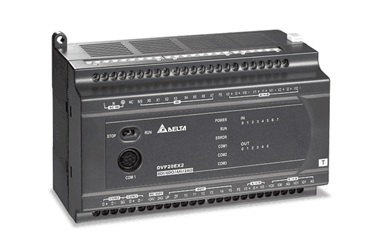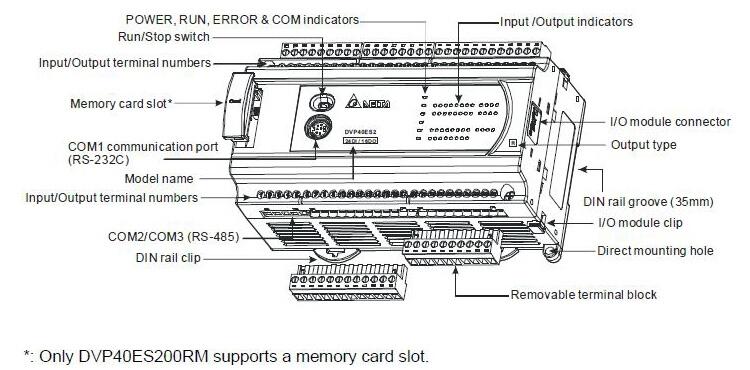What are the Advantages of Programmable Logic Controller?
A Programmable Logic Controller (PLC) is a specialized digital computer used in industrial automation and control systems. It plays a crucial role in monitoring and controlling manufacturing processes, machinery, and various types of equipment in sectors such as manufacturing, energy, transportation, and more. The primary purpose of a PLC is to automate repetitive tasks, enhance precision, and improve efficiency in industrial operations. Here's what we know about its advantages.

Flexibility:
PLCs are highly flexible due to their programmable nature. In traditional control systems, such as relay-based systems, making changes to the control logic often required rewiring, which could be time-consuming and error-prone. PLCs, on the other hand, allow engineers to modify the control program easily. This flexibility is crucial in manufacturing environments where production processes may change frequently, or where customization is needed to accommodate different product configurations. With PLCs, adjustments can be made through programming changes rather than physical rewiring, saving time and reducing the risk of errors.
Reliability:
PLCs are designed for high reliability in industrial environments. Unlike electromechanical systems that have moving parts and wear out over time, PLCs are solid-state devices. They consist of electronic components like microprocessors and memory, which are more durable and less prone to failure. This inherent reliability makes PLCs well-suited for applications that demand continuous and stable operation, contributing to increased system uptime and reduced maintenance costs.
Scalability:
The scalability of PLC systems refers to their ability to adapt to different scales of automation. PLCs are modular, allowing users to add or remove input/output (I/O) modules as needed. This modularity makes it easy to scale a control system to match the requirements of a particular application. For example, a manufacturing process can start with a basic PLC configuration and expand by adding more I/O modules to accommodate additional sensors, actuators, or control points. This scalability ensures that the control system can grow with the changing needs of the industrial process.
Ease of Programming:
PLCs are programmed using graphical programming languages, such as ladder logic, which resembles electrical relay diagrams. This visual representation makes it easier for engineers and technicians to create, understand, and modify control logic without the need for extensive coding expertise. The intuitive nature of these programming languages simplifies the development process and reduces the learning curve for those involved in designing and maintaining control systems. The ease of programming is a significant advantage, enabling faster implementation of control strategies and facilitating efficient troubleshooting and debugging when necessary.
Modularity:
PLC systems are designed with a modular architecture, allowing for easy integration of additional input and output (I/O) modules. This modularity facilitates system expansion and upgrades without requiring a complete overhaul of the control system. For example, if a manufacturing process expands or changes, users can add or replace specific modules to accommodate new equipment or control points. This modular design enhances the system's adaptability, reduces downtime during upgrades, and provides a cost-effective solution for evolving industrial needs.
Cost-Effective:
PLCs offer cost-effective solutions compared to traditional relay-based control systems. The cost savings arise from reduced wiring requirements, simplified maintenance, and improved energy efficiency. PLCs minimize the need for extensive physical wiring by using a centralized controller and digital communication, leading to lower installation costs. Additionally, the ability to diagnose and troubleshoot issues quickly reduces downtime, contributing to increased overall operational efficiency and cost savings over the long term.

Remote Monitoring and Control:
Many PLCs are equipped with communication interfaces, enabling remote monitoring and control. This feature is invaluable for industries with distributed operations or those requiring real-time data access. Remote monitoring allows operators and engineers to assess system performance, receive alerts for potential issues, and even make control adjustments from a centralized location. This capability enhances efficiency by minimizing the need for on-site presence, especially in large or geographically dispersed industrial facilities.
Diagnostic Capabilities:
PLCs provide advanced diagnostic features that aid in troubleshooting and maintenance. Real-time monitoring of system variables, error detection, and fault logging allow for quick identification of issues. This diagnostic capability enables proactive maintenance, reducing the likelihood of unexpected equipment failures. Additionally, the ability to log historical data helps analyze trends and optimize system performance over time, contributing to improved reliability and overall operational efficiency.
Integration with Other Systems:
PLCs can easily integrate with various automation and control systems, creating a seamless and comprehensive solution. Integration with Human Machine Interface (HMI) devices, Supervisory Control and Data Acquisition (SCADA) systems, and enterprise-level control systems enables a unified approach to industrial automation. This integration streamlines data exchange, provides a holistic view of the entire system, and supports efficient decision-making processes across different levels of the organization.
Safety Features:
Many PLCs come equipped with built-in safety features and protocols to ensure the safety of equipment and personnel. These features may include emergency stop functions, safety interlocks, and fail-safe operation modes. By incorporating safety measures into the control logic, PLCs contribute to creating a secure working environment. This is especially critical in industries where the potential for accidents is high, and safety standards must be rigorously upheld. The integration of safety features into the PLC enhances overall system reliability and compliance with industry regulations.
For more information, please visit ATO.com.

